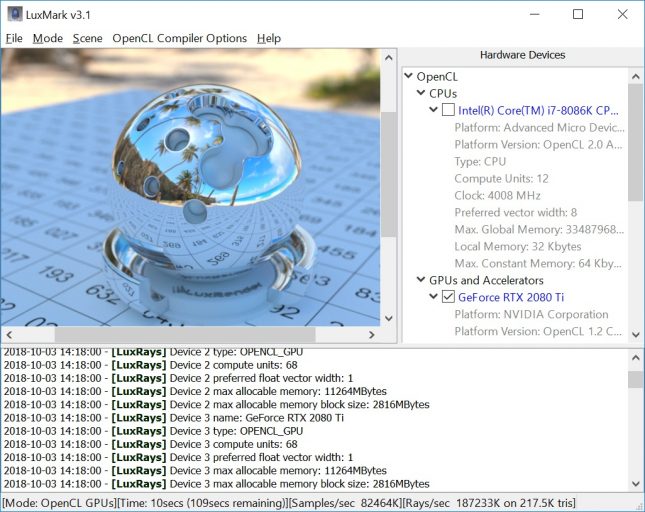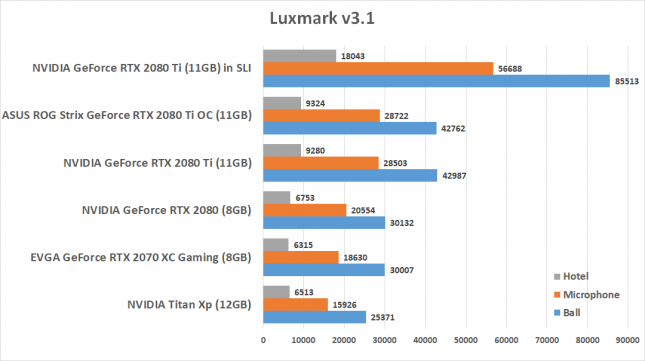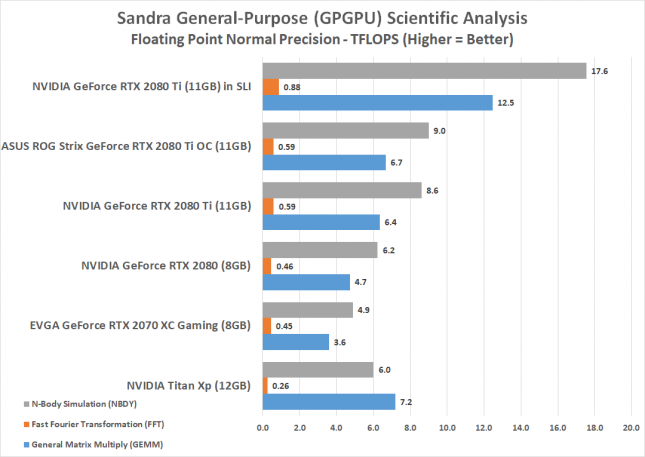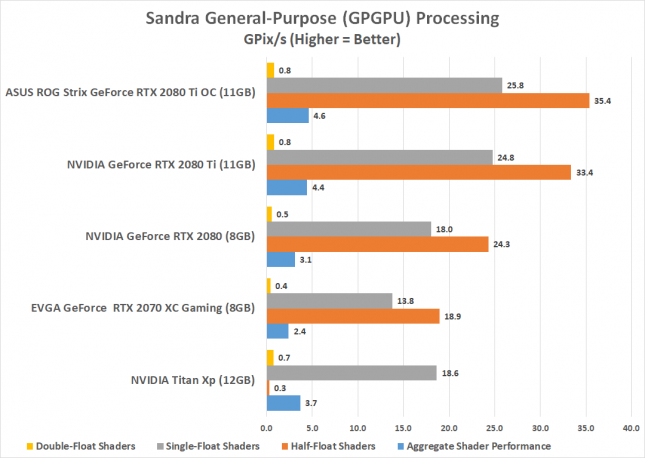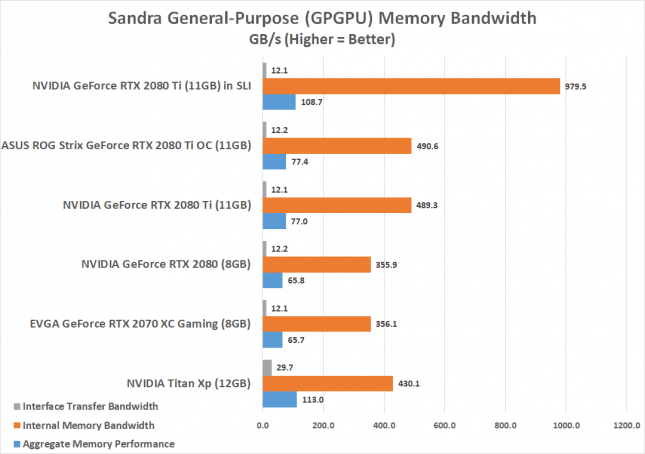ASUS ROG STRIX RTX 2080 Ti OC Edition Review
Not Gaming Benchmarks – Luxmark and Sandra
LuxMark v3.1 Benchmark
LuxMark is a OpenCL cross-platform benchmark tool that has been around since 2009. It was intended as a promotional tool for LuxCoreRender and remains a popular benchmark for those interested in OpenCL performance. LuxMark is now based on LuxCore, the LuxRender v2.x API available under Apache Licence 2.0 and freely usable in open source and commercial applications.
Benchmark Results: For some reason performance for the ball scene on the STRIX RTX 2080 Ti was a touch lower than the 2080 Ti FE, but it was faster on the microphone and hotel scenes.
SiSoftware Sandra GPGPU Testing
We fired up SiSoftware Sandra Titanium 2018 SP2b (version 28.31) to look at GPGPU performance on the new NVIDIA Turing GPU performs. This benchmark isn’t really aimed at gamers, but some will likely find the results interesting.
The first test that we ran was the Scientific Analysis benchmark and it should be noted that used CUDA for the test. We set the Floating-Point precision to ‘normal’ and we charted the results for N-Body Simulations (NBDY), Fast Fournier Transformation (FFT) and General Matrix Multiply (GEMM) operations.
When it comes to scientific number crunching the ASUS ROG STRIX RTX 2080 TI gives bests the 2080 Ti FE in the N-Body Simulation and General Matrix Multiply operation tests.
The standard GPGPU processing test shows the higher clock speeds does help shader performance.
The GPGPU Memory Bandwidth testdoesn’t show much difference between the ASUS ROG Strix 2080 Ti OC and the GeForce RTX 2080 Ti FE and that makes sense as both cards feature 11 GB of GDDR6 memory running at 14 Gbps. If there was a difference we’d be in trouble!

